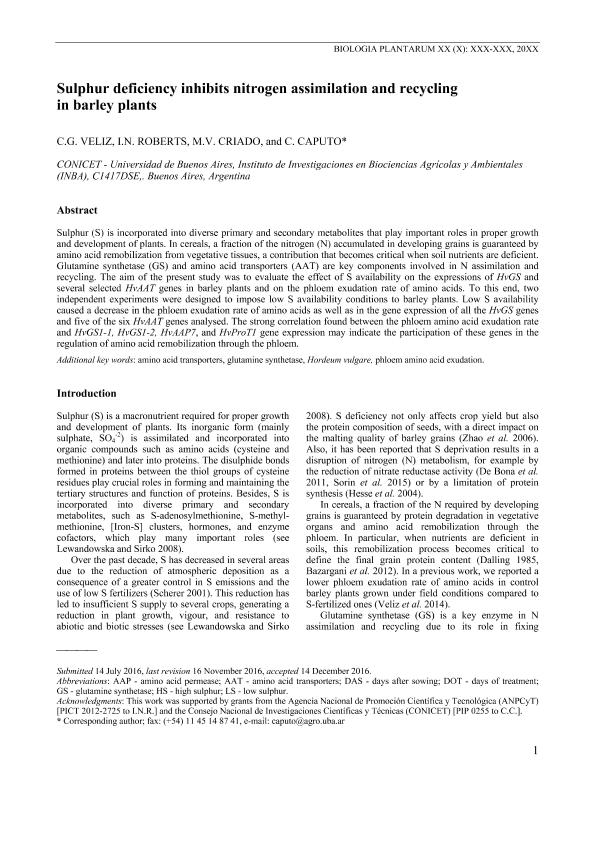Artículo
Sulphur deficiency inhibits nitrogen assimilation and recycling in barley plants
Fecha de publicación:
12/2017
Editorial:
Springer
Revista:
Biologia Plantarum
ISSN:
0006-3134
Idioma:
Inglés
Tipo de recurso:
Artículo publicado
Clasificación temática:
Resumen
Sulphur (S) is incorporated into diverse primary and secondary metabolites that play important roles in proper growth and development of plants. In cereals, a fraction of the nitrogen (N) accumulated in developing grains is guaranteed by amino acid remobilization from vegetative tissues, a contribution that becomes critical when soil nutrients are deficient. Glutamine synthetase (GS) and amino acid transporters (AAT) are key components involved in N assimilation and recycling. The aim of the present study was to evaluate the effect of S availability on the expressions of HvGS and several selected HvAAT genes in barley plants and on the phloem exudation rate of amino acids. To this end, two independent experiments were designed to impose low S availability conditions to barley plants. Low S availability caused a decrease in the phloem exudation rate of amino acids as well as in the gene expression of all the HvGS genes and five of the six HvAAT genes analyzed. The strong correlation found between the phloem amino acid exudation rate and HvGS1-1, HvGS1-2, HvAAP7, and HvProT1 gene expression may indicate the participation of these genes in the regulation of amino acid remobilization through the phloem.
Archivos asociados
Licencia
Identificadores
Colecciones
Articulos(INBA)
Articulos de INST.DE INVEST. EN BIOCIENCIAS AGRICOLAS Y AMBIENTALES
Articulos de INST.DE INVEST. EN BIOCIENCIAS AGRICOLAS Y AMBIENTALES
Citación
Veliz, Cintia Gabriela; Roberts, Irma; Criado, Maria Victoria; Caputo Suarez, Carla Paula; Sulphur deficiency inhibits nitrogen assimilation and recycling in barley plants; Springer; Biologia Plantarum; 61; 4; 12-2017; 675-684
Compartir
Altmétricas




